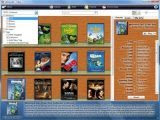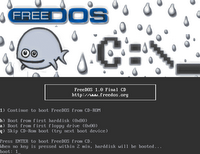Posted on Mon, Jan. 29, 2007
Vista's pretty, but it's a shameless Mac OS X imitator
JULIO OJEDA-ZAPATA
I praise Microsoft's new Windows Vista operating system, and I also curse it.
Vista certainly is pretty. PC users long used to the dowdy Windows XP will do a double take at Vista's translucent images and groovy 3D effects. Vista also is crammed with powerful, useful new features, like lightning-fast file searching, photo organizing and movie-DVD burning.
But after waiting five years — as in half a decade — for this thing, I think I should get something revolutionary, a PC operating system so astonishing it makes the competition look laughably primitive. The almighty Microsoft made this, right? So Vista — being released to consumers Tuesday — has to be jaw-droppingly superior, right?
Well, it's not. Vista hardly rocked my world during weeks of testing. It's a fine Windows upgrade, but it's also a shameless rip-off (and not quite the equal) of another major operating system, Apple Computer's Mac OS X.
That begs the question: Why not just use OS X?
Those upgrading from XP likely will have to get a new computer anyway because Vista doesn't work properly on most older PCs. (See my recent column, "Take your time buying that new computer," for details on this.) So, instead of purchasing a Windows PC, they could — and typically should — get an Apple Macintosh computer running OS X.
Apple is about to release an OS X upgrade, nicknamed "Leopard," that will make Vista look archaic in some ways. But Vista does retain the upper hand in certain respects. Here's how the operating systems compare in essential categories:
Appearance. Vista looks amazing. Its windows cast subtle shadows and sport translucent borders, for instance.
But OS X has had eye candy like this for years. Oh, Microsoft throws in a few enhancements. Users can adjust the border translucency, for instance. But Vista is still only an OS X clone — and a slightly inferior-looking one, at that.
Finding stuff. With so many documents, pictures, video clips, e-mails and the like on today's computers, search is an essential feature. Thank goodness Vista is vastly superior to its XP predecessor in this way. Click the Start button and type your search queries into the window that appears just above. Presto! Your results appear in seconds.
Hmm, does this sound familiar, OS X users? That's right, the Spotlight search engine does the same thing.
Vista helps you keep track of stuff in other ways. If you start getting confused by all the windows that are open on the desktop, click Windows-Tab. Ta-da! Windows tilt slightly and group themselves together in an easy-to-skim Flip 3-D arrangement. That's handy but hardly new. The Exposé feature in OS X does pretty much the same thing.
You also can create intelligent Search Folders that automatically fill with data based on criteria you set. Cool, just like the Smart Folders in OS X.
More secure. Windows XP is notorious for its gaping security holes, which Microsoft has scrambled to plug in Vista. Whether it has succeeded remains to be seen — hordes of cybervillains will do their darnedest to compromise this version of the market-dominant Windows, as well.
Vista's safeguards do seem impressive, though. You can't install anything on a Vista PC without clicking through confirmation windows, for instance. Seem reasonable? Sure it does — OS X has boasted this feature for years.
Wid(gad)gets. So-called "widgets" or "gadgets" are everywhere. The miniapplications show weather forecasts, track packages and much, much more. And everyone from the Yahoo and Google search engines and the Opera browser maker to the TypePad and WordPress blogging services offer their own variations.
So do Windows Vista and OS X. Microsoft's gadgets could be called rip-offs of Apple's widgets. But, to be fair, OS X widgets are rip-offs of Konfabulator, a pioneering widget technology now part of Yahoo and dubbed Yahoo Widgets.
A boob tube. By now, you'd surely assume that I'd recommend avoiding Windows PCs like the plague. Far from it. Budget permitting, I'd own both a Mac and a Vista PC — the latter largely because of its "Media Center" capabilities.
These allow PCs with integrated TV tuners to work as TiVo-like digital-video recorders once connected to cable-TV feeds. I've used a Dell desktop PC with Vista for weeks to record "Heroes," "Jericho," "Smallville" and "Battlestar Galactica," and I'm thrilled at how well this works. While Media Center isn't new (XP versions have been available for years), it has been improved and polished in Vista.
Nothing on the Mac quite compares. You can't get Macs with integrated TV tuners, and TiVo-style features are available only via add-on hardware and software that are inferior to Vista's elegant, built-in Media Center features.
But beware: Microsoft's close ties with entertainment companies are painfully evident in some ways. You won't be allowed to burn certain Media Center recordings (such as PBS' "Prime Suspect") onto blank DVD discs, for instance.
Bonusware. Microsoft has bundled an assortment of useful programs with Vista, which means you won't have as urgent a need to invest in additional software.
Windows Photo Gallery has nice tagging and rating features, for instance. Windows DVD Maker (a companion to the old, scarcely improved Windows Movie Maker) is handy for burning family videos onto blank discs that are playable in any home DVD player.
But these programs are no match for what is available on any new Mac. Every Apple machine has iLife, a suite of interlocking programs for editing video, burning DVDs, organizing photos, composing music and even creating slick Web sites. These make Vista's offerings look insanely inadequate. New PCs do often include extra programs from third parties for enhanced capabilities, but a software hodgepodge doesn't have iLife's tight integration.
Vista also bundles in Windows Calendar, Mail and Contacts, which are rough equivalents of iCal, Apple Mail and Address Book on Macs.
What's next? Apple this spring will release OS X version 10.5 with advanced features that will leapfrog the just-released Vista.
While the new Windows has rudimentary data-backup capabilities, for instance, Leopard will include something called Time Machine that will transparently replicate data on a backup drive and allow for point-and-click retrieval of existing files (and even old versions of those files).
It's also important to note that Apple has offered OS X upgrades at roughly yearly intervals during the half-decade that Microsoft has labored on Vista. Apple is an innovation engine; Microsoft, not so much.
Bottom line. Get a Mac with OS X unless your home-computer needs are Windows-specific, or if the fine Media Center is a must for you. You likely won't regret a Vista-PC purchase, but I'm betting you'll enjoy a Mac much more.
Julio Ojeda-Zapata covers consumer technology. Reach him at jojeda@pioneerpress.com or 651-228-5467. Get more personal tech at yourtechweblog.com and twincities.com.
MORE INFORMATION
• Windows Vista www.microsoft.com/windowsvista
• Apple Mac OS X www.apple.com/macosx
© 2007 St. Paul Pioneer Press and wire service sources. All Rights Reserved.










